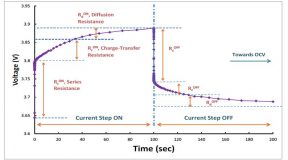Milind Paranjape, Marketing Manager – Service Solutions
Emerson Network Power, Liebert Services
According to focus groups conducted by Emerson Network Power in 2012, IT managers, facility managers and C-level executives want UPS features that help them maintain and manage their critical spaces on a day-to-day basis. More specifically, they expressed a need for more information to do the following: predict, prevent, respond to, and recover from downtime risks; justify their capital requests; and answer questions posed to them by their senior management regarding failures and overall performance.
Monitoring that enables remote services is a solution that could address these needs and ultimately help you keep the promise of availability made to your business and your customers.
As discussed in a previous Battery Power blog post entitled “Understanding Battery Lifespan to Avoid Data Center Downtime,” Greg Ratcliff points out the pivotal role of batteries in business-critical data centers, highlighting that a UPS is only as reliable as the batteries that support it. Additionally, battery failure is a leading cause of unplanned downtime, which is why they should be properly maintained and monitored.
However, simply setting up stationary battery monitoring with comprehensive data collection may not be enough to address the needs of managers and executives because having the information and knowing what to do with it are two different things.
According to “The Effect of Regular, Skilled Preventive Maintenance and Remote Monitoring on Critical Power System Reliability,” a 2007 Emerson Network Power white paper, data centers with battery monitoring systems installed on site had a reduced rate of outages due to bad batteries, but outages did still occur. These incidents were isolated to human error where customers were either not watching the system or they did not know how to properly analyze the data provided by the monitor. This brought to light the need for experts to correctly monitor the alarm data and properly maintain the systems.
IT and other teams responsible for managing critical infrastructure are essentially able to augment their staff with a battery monitoring solution that enables remote services—preferably delivered by an organization that is comprised of domain experts. The latest technology, such as that used in Albér battery monitoring, can continuously check and diagnose all critical battery parameters for UPS systems. It identifies potential problems by monitoring parameters such as cell voltage, overall string voltage, current and temperature. Automatic periodic tests of the battery’s internal resistance verify the operating integrity of the battery.
By combining battery monitoring with remote services, data center managers can define escalation plans that are executed upon any alarm condition. For example, if resistance values exceed set thresholds, the service provider should be able to take action before it affects other batteries in the string. Your chosen service partner should have critical infrastructure experts available to support battery monitoring efforts 24 hours a day, seven days a week in order to help improve overall system availability.
With today’s battery monitoring technology, the right service organization can reduce risks by identifying and fixing minor battery problems before they become major system problems. Plus, with proper analysis of the comprehensive data collected, facility managers can make informed maintenance and replacement decisions. The life of battery systems are extended by eliminating defects and other conditions that degrade the quality of otherwise healthy batteries.
Ultimately, relying on outside resources for battery monitoring and remote services can free up IT and facility resources, allowing staff to focus more on strategic data center infrastructure management that supports core business objectives such as reducing operating costs, while simultaneously increasing efficiency and availability.
For more information, please visit www.emersonnetworkpower.com.










